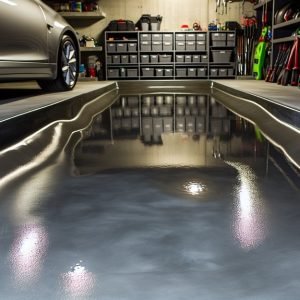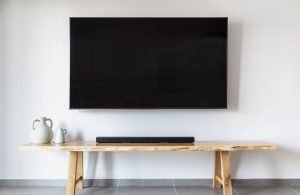Last Updated on June 26, 2025 by teamobn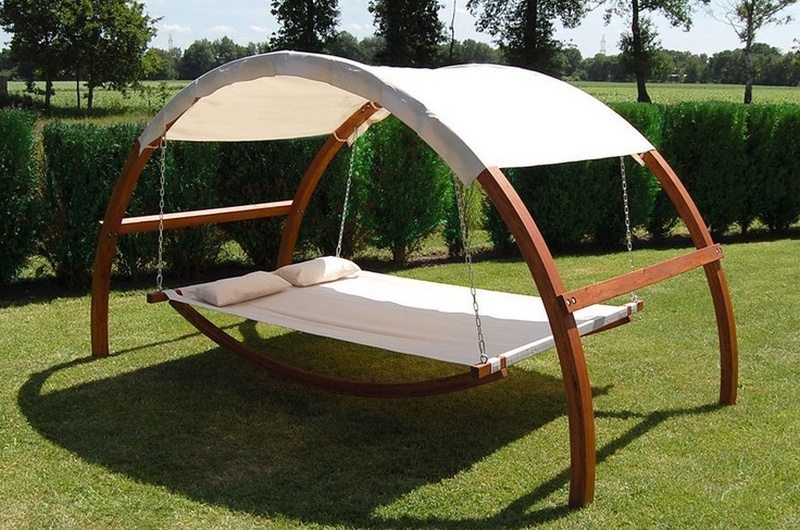
Swing beds are a better option than a conventional porch swing if you need day beds like taking a nap or a longer sleep outdoors. It’s wider than a porch swing and it allows you to lay down more comfortably. Even if it’s just a nap, comfort is of the essence if you want to wake up relaxed instead of cramped.
A swing bed for outdoor day beds allows you to enjoy the benefits of day beds with the option of a swing feature that transforms your daybed into a double lounger.
Daybeds can be a great addition to your backyard, patio, or porch. Daybeds for outdoors make for ideal sunrooms and also come in handy when entertaining guests. Many people like to enjoy the outdoors in the form of a swing bed in the sunshine.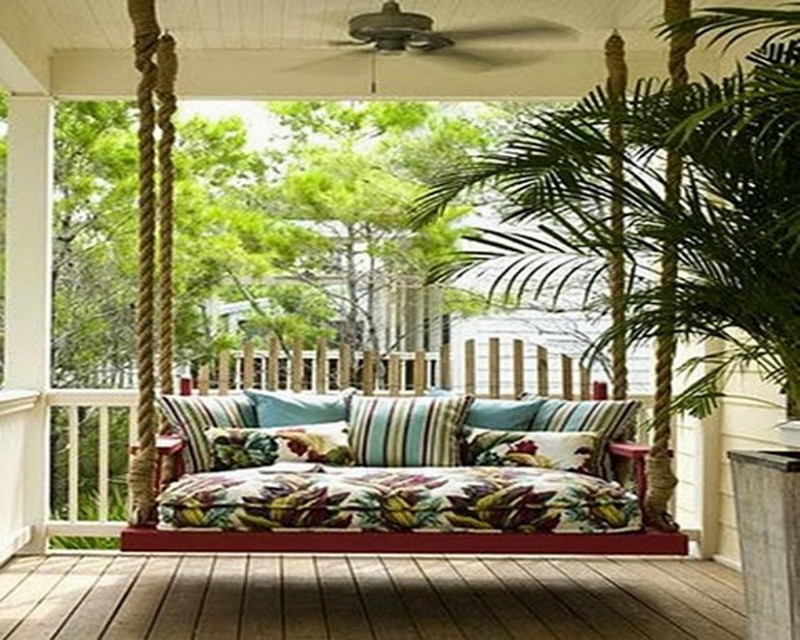
It has enough space that you can even share it with a loved one. It’s a great way to enjoy nature and experience the same comfort you get when you sleep indoors.
Swing beds come in a range of designs and materials. And it has come a long way from the conventional designs for swing beds.
They come in different sizes, color, and style. There are no hard and fast rules when it comes to design, but safety in the suspension aspect remains of the essence.
If you can’t find one that matches your taste, you can also build your own. This makes it easier for you to play with the dimensions; accommodate more people or fit it in the space you have allocated for it.
It is highly recommended that you customize the materials to meet your concept. It’s also one way to lower the cost when you build one.
Customized your day beds for certain purposes. 🙂
Before having a swing bed, you should at least know the purpose of building one. Would it be for sleeping, sitting, napping, or playing? The size of your swing bed will be determined by its purpose.
For Sleeping
If you tend o build a swing bed or a day bed for sleeping outside, you should consider bigger and wider day beds. This will make sure that you will have enough space to sleep comfortably outside.
The overall quality of the bed is also important, and this is why you should pay more attention to the structural stability and the strength of the wood used in building the bed.
This will ensure your safety while sleeping on it.
For Sitting
If you need a swing bed that will be used for sitting while having a conversation with a friend, then you need one that is the size or a little larger than your sofa or couch.
With these day beds, you can enjoy your outdoor area while reading your favorite book, or having a sip of your favorite refreshments with your friends.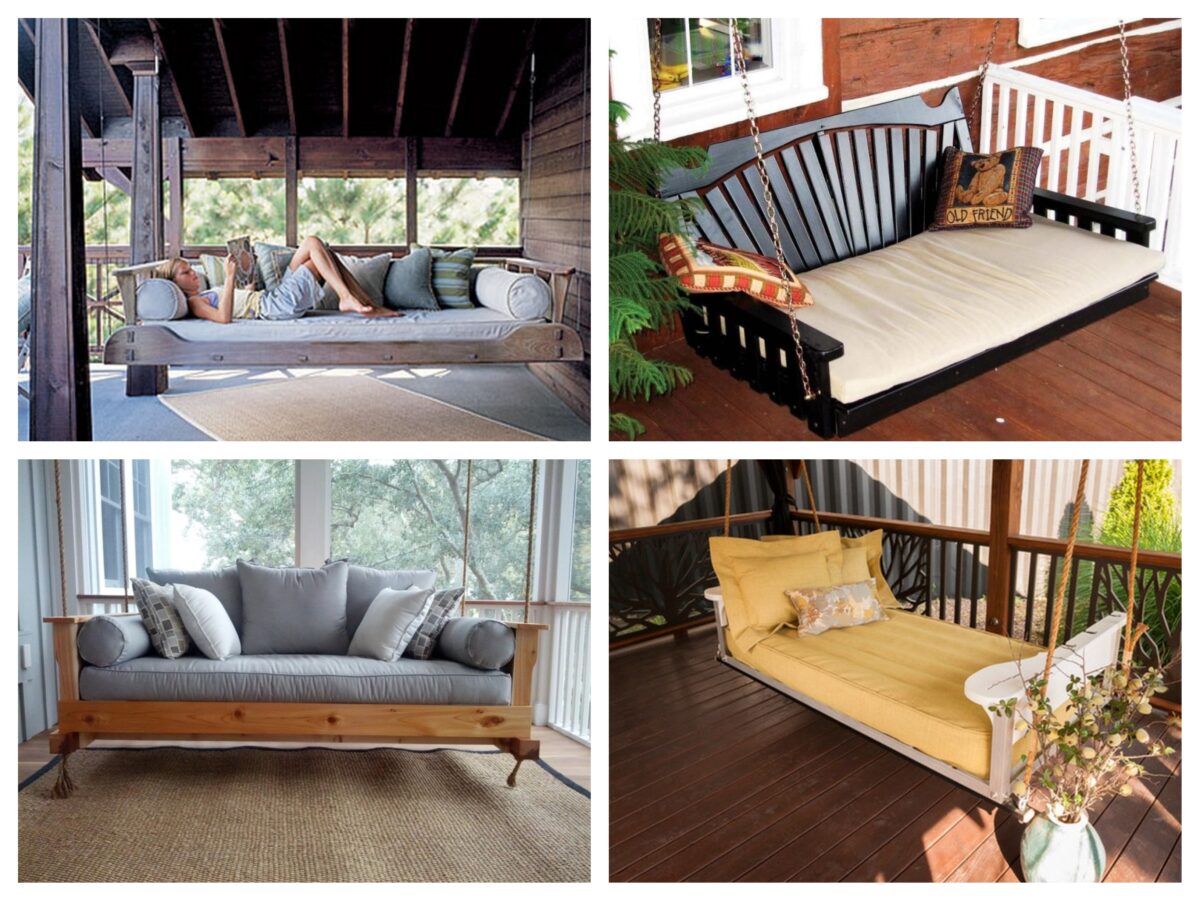
Swing bed for playing
If you try to create a space for your child to play with, this outdoor swing bed will be the best solution. Not only will your children enjoy the swing, but it can also serve as a place where they can enjoy their favorite toys you bought for them.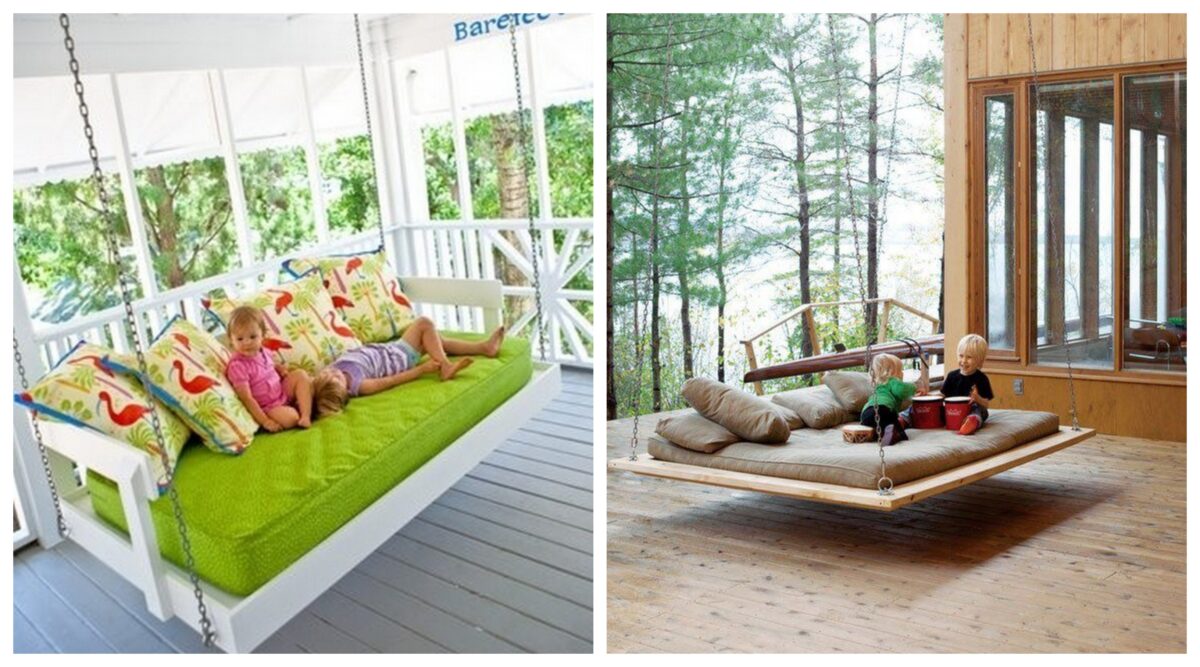
Want to get the most out of your outdoor living space? Get the perfect swing bed for your outdoor living space! View our gallery for inspiration.
Suspension hardware and installation tips
A day bed swing is only as safe as the hardware above it. Learn load ratings and mounting tricks so every nap feels stable and worry-free.
Locating Structural Support
Invisible framing carries the real weight, not the ceiling boards you see. Find joists or beams with a stud finder or small pilot holes. You’re looking for solid lumber at least two inches thick or laminated beams rated for exterior loads.
Mark centers, then measure spacing so the day bed swing hangs evenly. If beams run parallel to the porch edge, add a perpendicular header board to share weight across two joists. This upgrade stops sagging and cracking later.
Choosing Eye Bolts and Lag Screws
Hardware must match load and weather. Pick stainless or hot-dip-galvanized steel rated at least 1,000 pounds each. A twin-size day bed swing with two adults can exceed 600 pounds during motion, so always double the expected load.
Use eye bolts with closed loops, not open hooks, to prevent accidental lift-off. Lag screws must bury through plaster or sheathing and bite three inches into framing. Tighten by hand until washers snug the hardware without crushing wood fibers. Recheck torque after the first week.
Rope Versus Chain Suspension
Natural rope looks charming, yet synthetic rope lasts longer. Marine-grade polyester houses UV inhibitors and resists mildew, making it a smart pick for humid porches. Choose at least half-inch diameter so knots hold without flattening. If you prefer chain, select powder-coated or stainless links sized to match the eye bolt opening. Chain adds a subtle jingle but reveals more movement feedback. Insert rubber bushings between chain and bolt to curb metal squeaks. Either method works when tension remains vertical and twist free.
Leveling and Height Adjustment
Uneven suspension tilts your mattress, sliding sleepers toward one corner. Measure from floor to each eye bolt, then cut ropes or adjust chain links until the frame sits square. Keep the front edge an inch lower so the day bed swing settles naturally without bumping the back wall.
Ideal seat height mimics a dining chair, around seventeen inches from deck to cushion. Taller users appreciate nineteen inches. Test with your heaviest expected guest before trimming excess rope. Burn synthetic ends to stop fray.
Routine Safety Inspections
Monthly checkups extend the life of every hanging bed. Run your hand along rope or chain to feel for frayed strands or rust spots. Wiggle eye bolts and listen for creaks that hint at wood compression.
Tighten hardware a quarter turn if movement exists. Sweep debris off the top slats so trapped moisture doesn’t rot hidden joints. Twice a year unhook the day bed swing, wash cushions, and lubricate metal. Keeping a log on your phone reminds you when the next inspection is due.
Click on any image to start lightbox display. Use your Esc key to close the lightbox. You can also view the images as a slideshow if you prefer 😎
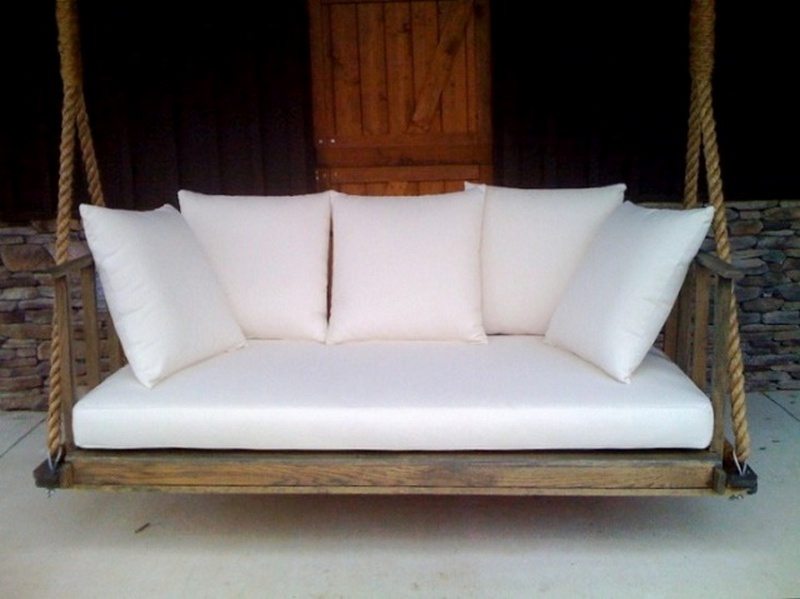
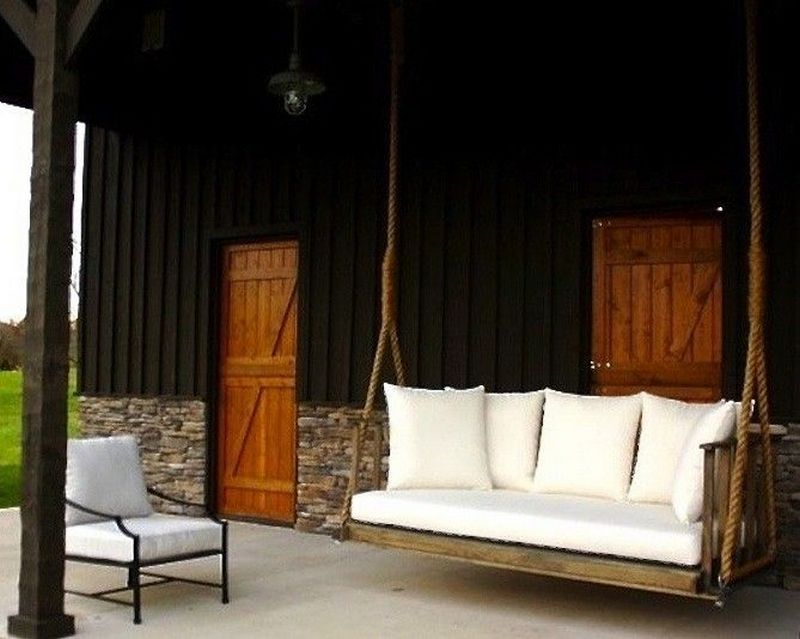


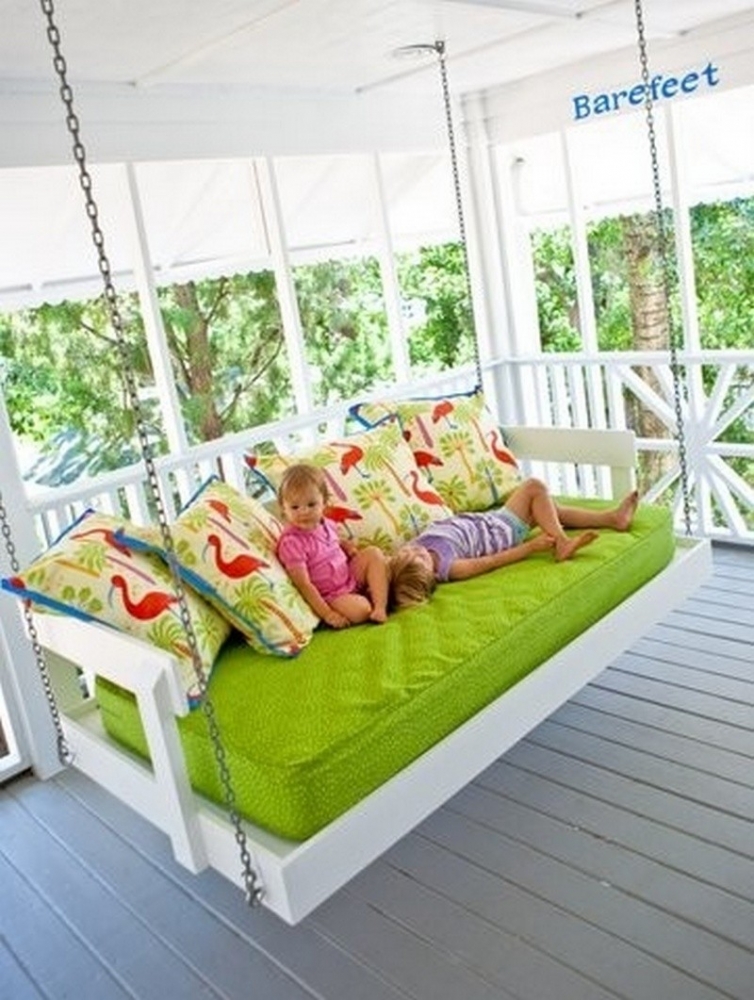


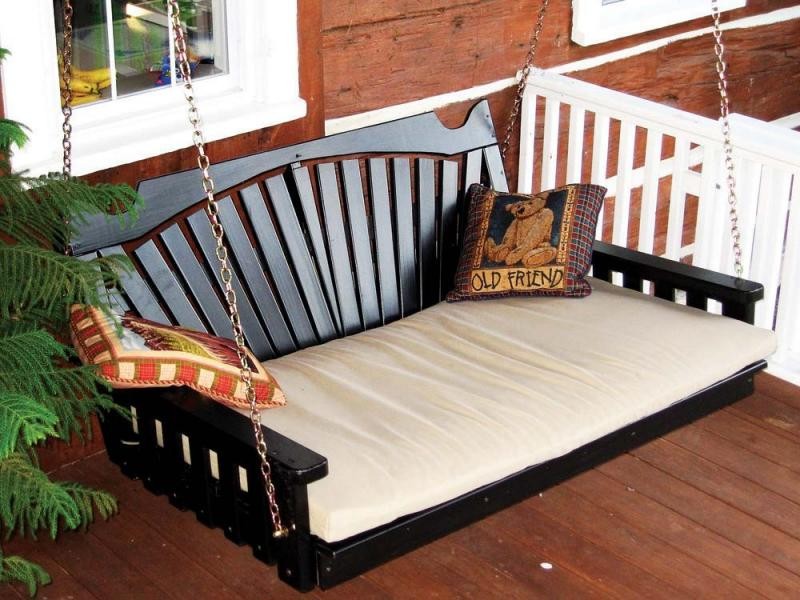

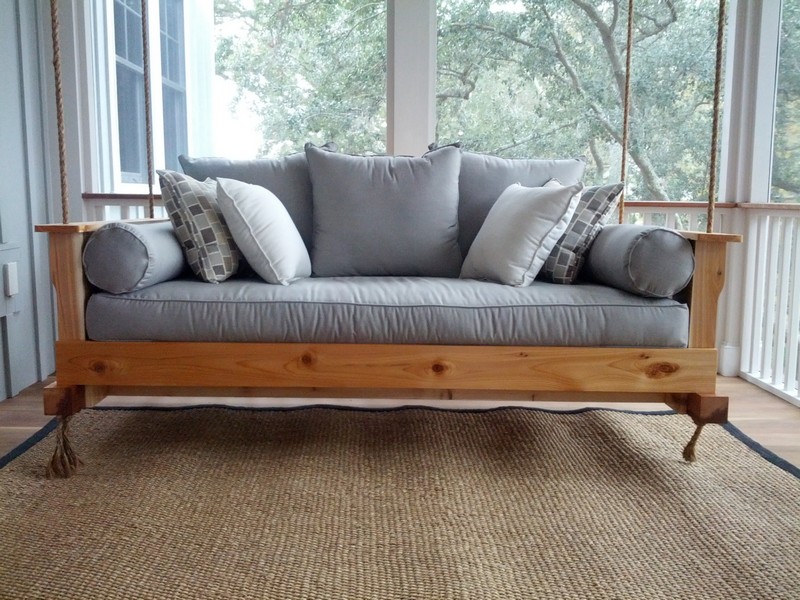

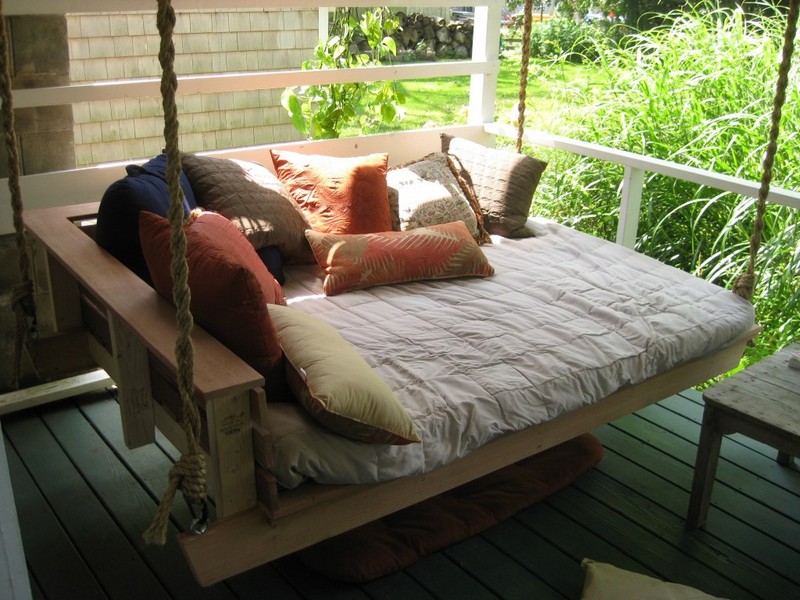


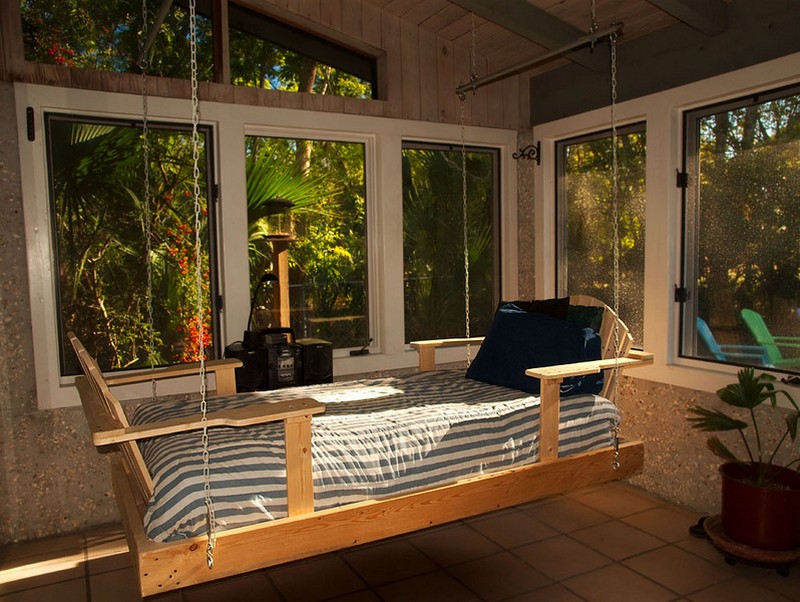
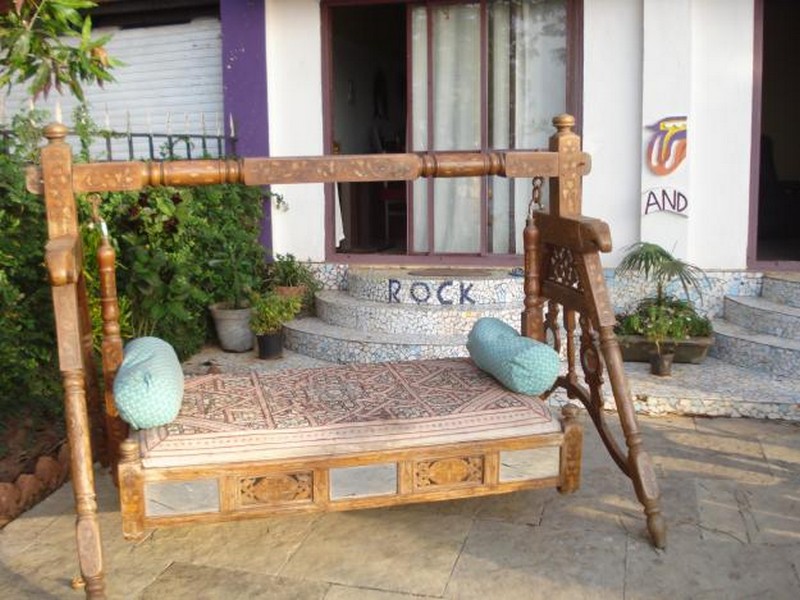
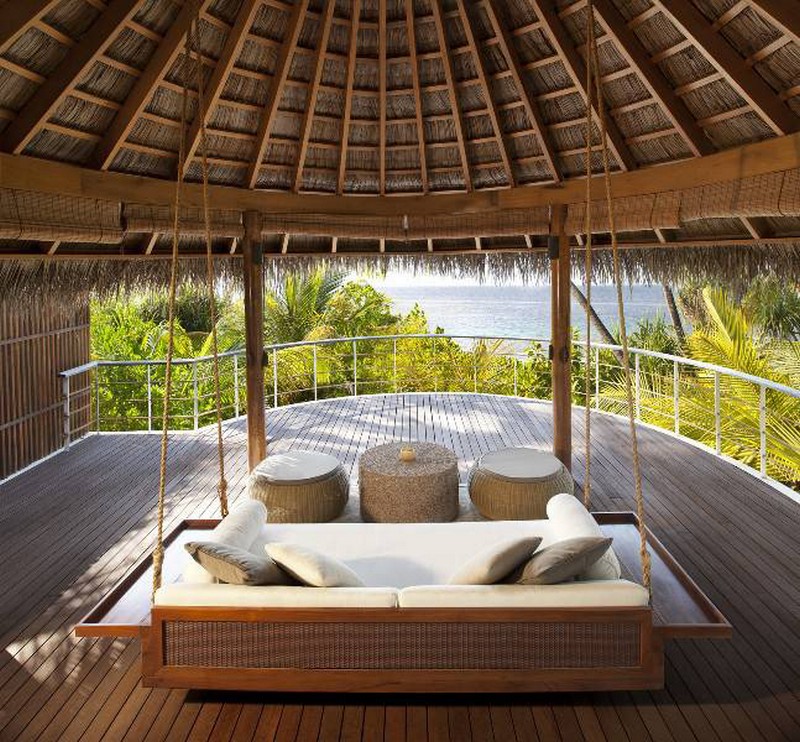
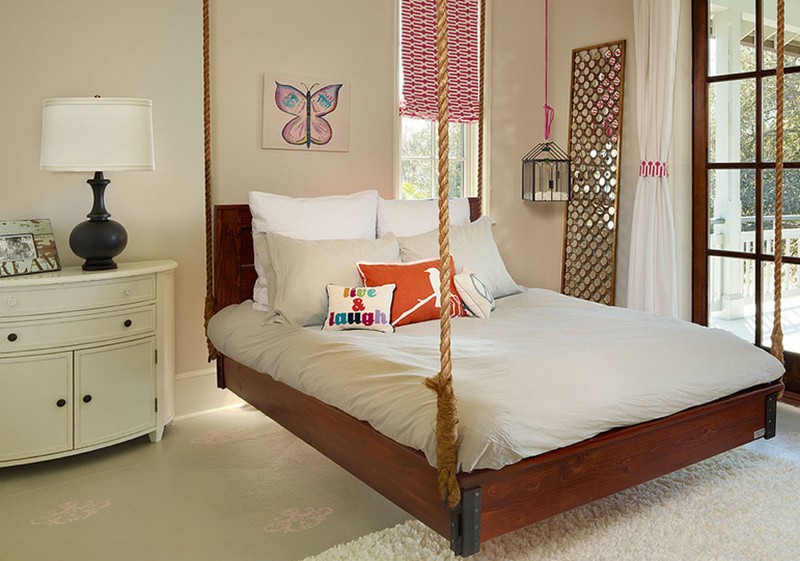
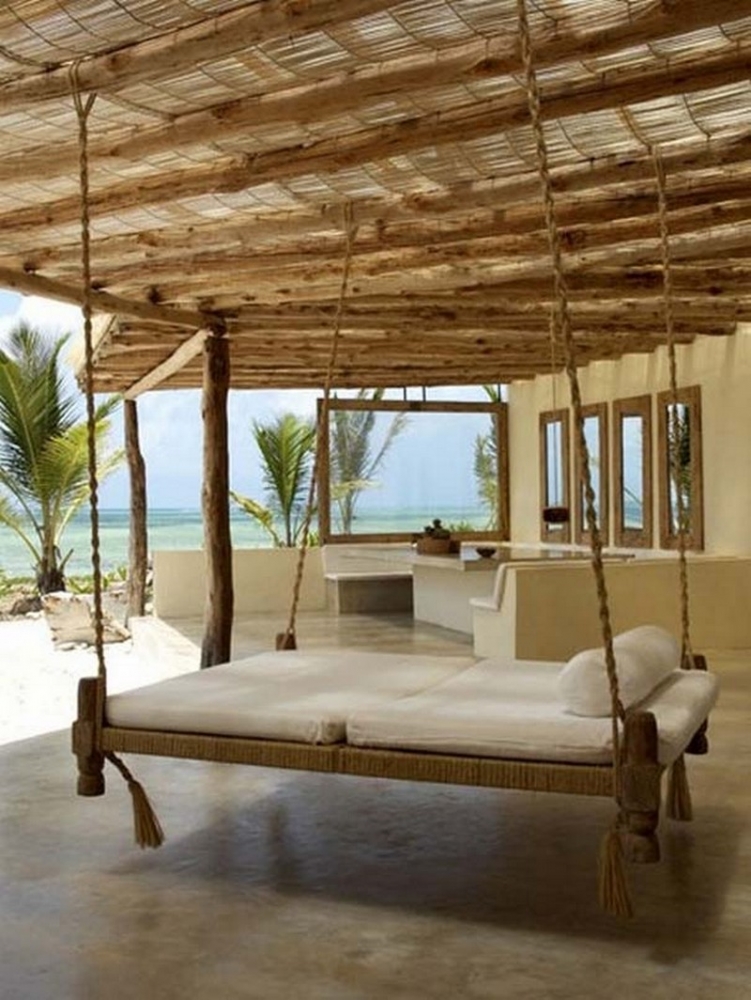


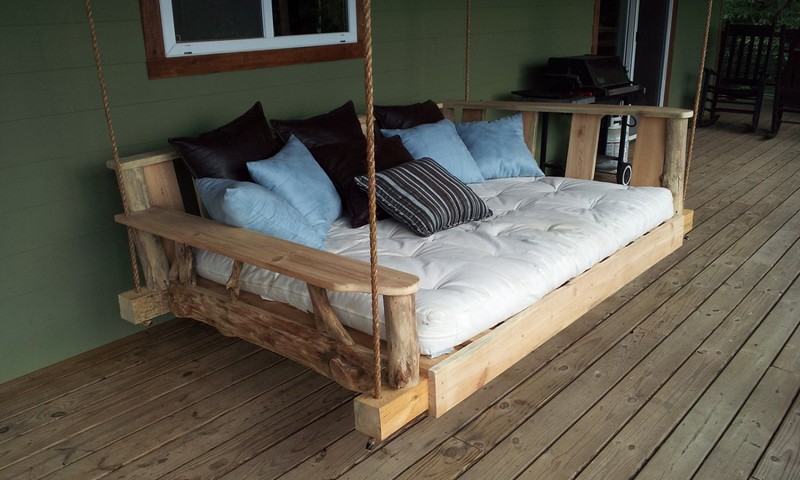
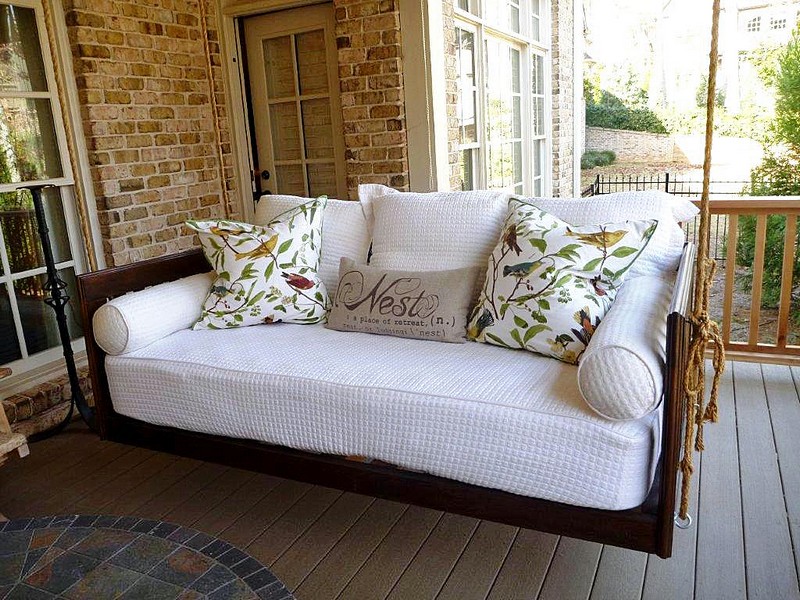
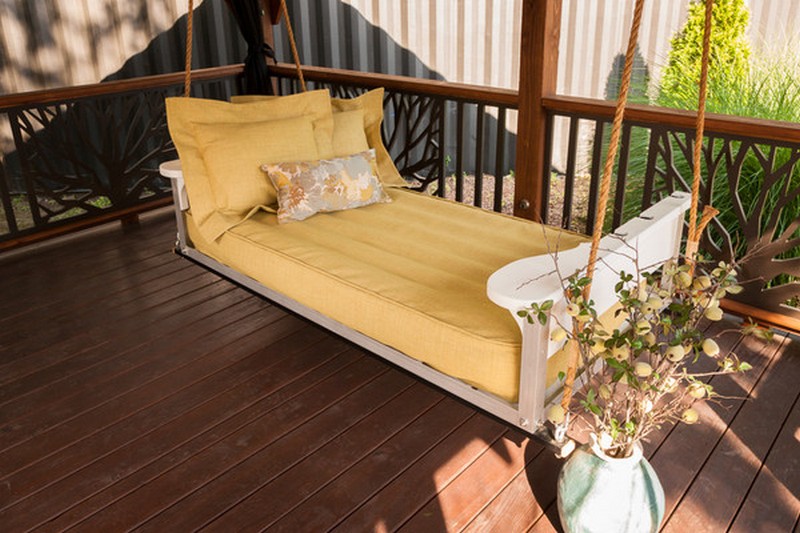





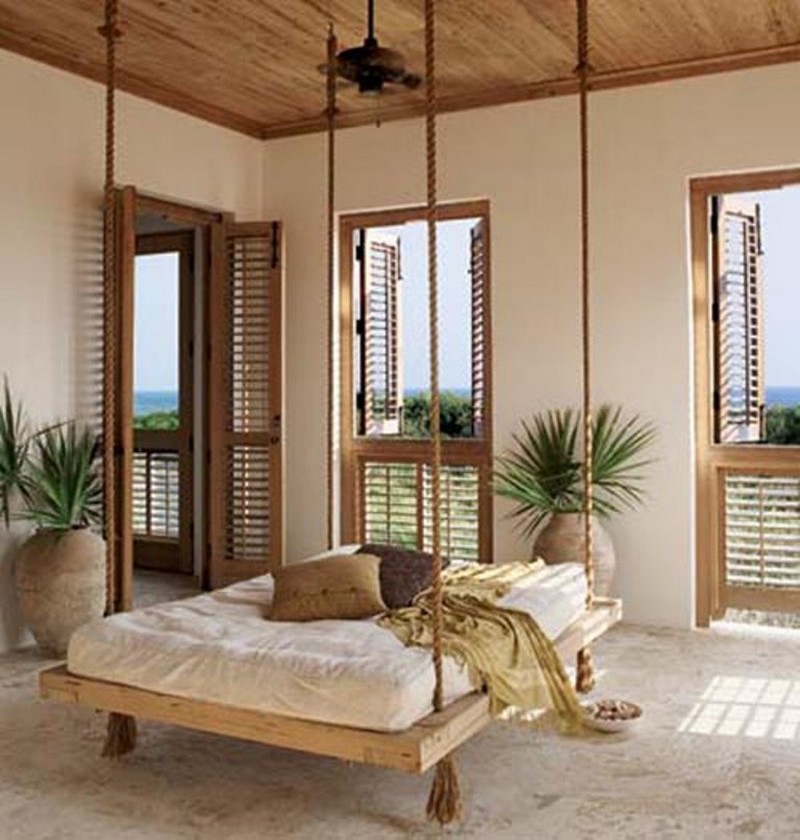

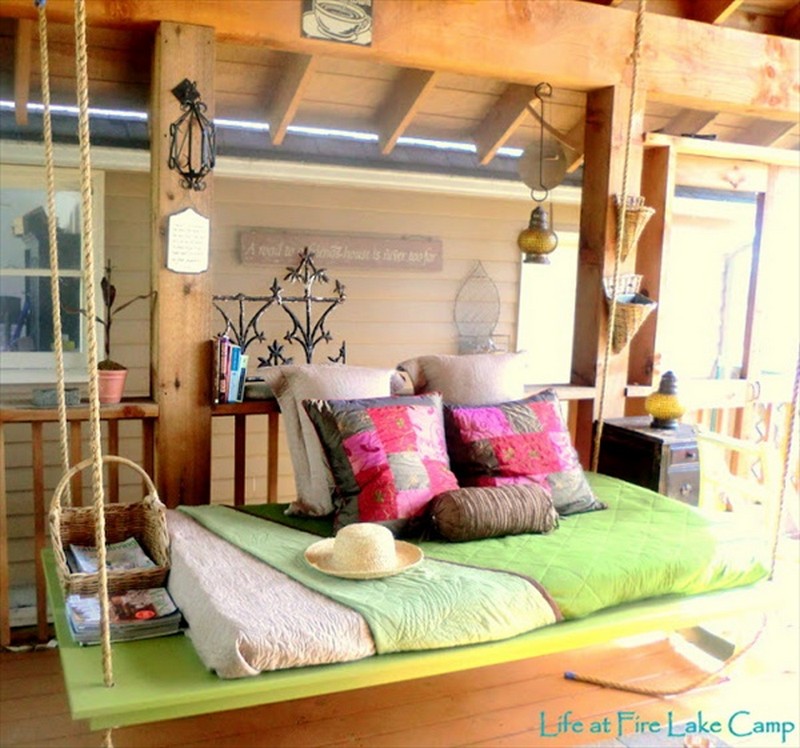
Weather-proof fabrics and finishes
A day bed swing lives outdoors, where sun and storms strike daily. Choose tough textiles and protective coatings to keep colors bright and wood strong.
Solution-Dyed Acrylics for Cushions
Bright striped cushions sell the coastal vibe, yet fading turns them drab. Solution-dyed acrylic yarns lock pigment into the fiber instead of coating it afterward. That means red stays red for years despite strong tropical sun. Fabric also resists mildew and wipes clean with mild soap.
Specify at least 270 grams per square meter so covers feel thick. Pair with UV-rated thread so seams last as long as the fabric. A waterproof zipper keeps the insert dry when sudden showers roll through.
Quick-Dry Foam and Ventilated Bases
Standard upholstery foam soaks up rain like a sponge. Quick-dry reticulated foam keeps cells open so water drains in minutes. Pair it with a slatted frame or drilled plywood deck so air reaches every side. You avoid musty odors and bacteria growth that ruin weekend lounging.
Wrap the foam in mesh before sliding it into the cushion cover. The mesh prevents chafing against inner seams. Flip cushions after heavy rain to speed drying and inspect for trapped grit or leaves.
Oil and Stain Options for Hardwood Frames
Teak, mahogany, and acacia shrug off insects, yet they grey when unfinished. Lightly sand once a year, then brush on penetrating tung or Danish oil. The oil feeds the grain and forms a soft barrier that moves with seasonal expansion. If you want bolder color, choose a semi-transparent outdoor stain with added UV blockers.
Stay away from thick film varnish that can peel under swinging stress. Wipe excess within fifteen minutes, and let the frame cure overnight before re-hanging the day bed swing.
Powder-Coated Metal for Harsh Climates
Metal brackets and chain help, yet bare steel rusts fast near the sea. Powder coating fuses pigment and resin in a baked layer tougher than paint. Pick polyester powder with a minimum thousand-hour salt-spray rating.
Dark matte tones hide scuffs, while bright white shows dirt but reflects heat. Inspect for chips each spring and touch up with a matching aerosol kit. If corrosion starts underneath, sand to bare metal before recoating. Proper prep lets chain and brackets outlast the cushions.
Seasonal Maintenance and Cover Strategy
Even premium materials need a shield in typhoon season. Invest in a breathable waterproof cover with vents that prevent ballooning winds. Slip it over the day bed swing whenever you plan a week away. Make sure the cover hangs below the frame so rain drips clear of the hardware.
Every three months remove the cover on a dry morning, wipe off condensation, and let sun kill lingering spores. A simple habit like covering extends fabric life and keeps wood maintenance quick. Store the cover inside when not in use to deter chewing rodents.
Conclusion
Building a day bed swing turns wasted porch space into a peaceful retreat. Choose solid hardware, weatherproof textiles, and run regular safety checks to keep every sway secure. Test the load and motion before inviting friends to lounge. Durable finishes and quick-dry cushions will keep the setup looking fresh for seasons. Invest that extra care and your swing will reward you with effortless naps and easy conversations under the sky.
If you liked these, you will also like viewing these swings…




